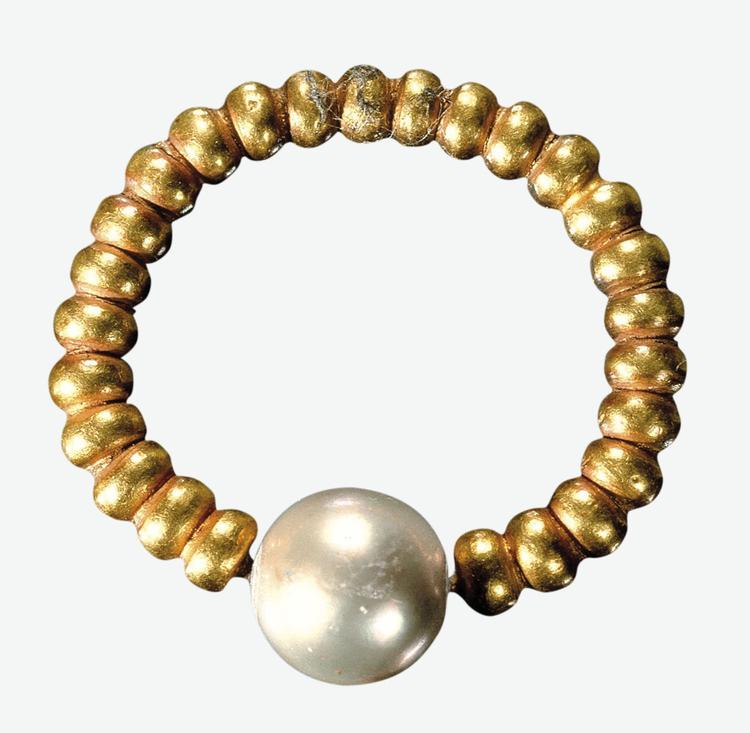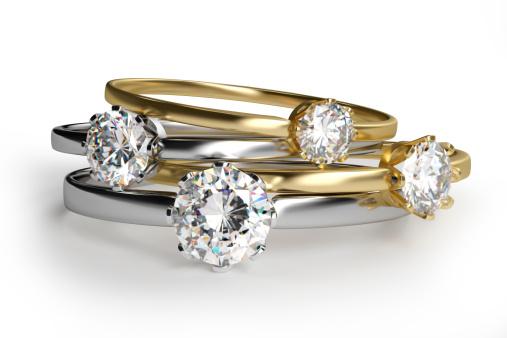I have seen Lolia Paulina covered in emeralds and intertwined pearls; the jewels shone all over his head, in the braided hair, the ears, the neck and the fingers, adding up to forty million sesterces". This was written by the naturalist Pliny the Elder, in the middle of the 1st century BC, about the third wife of the Emperor Caligula.
Though few women could match her level of luxury, Lolia Paulina's taste for pearls was widespread in Imperial Rome. The use of it as an ornament and status symbol led to an intense trade with the producing regions, located mainly in the East. This origin was manifested in the very name given to them in Latin, "daisy", which through the Greek ultimately came from the Sanskrit mangara, "bouquet of flowers". In ancient times, four pearling regions were known: the Red Sea, the Persian Gulf, India and Ceylon, to which were added some areas of China. Pearls of various qualities, sizes and colors arrived in Rome through trade. The most appreciated were those from the Red Sea and the Persian Gulf, due to their great quality and brilliance. Less valued were the pearls from the Black Sea, small and reddish in color, and those from Acarnania, in Greece, very coarse, large and with marble tints. The river pearls of Britannia, darker and with golden tones, became the most valued in the west of the Empire, while those of Mauritania were appreciated for their smallness.
To know more
Perfume in Rome
read article
pearl divers
The sources provide little information on how pearl harvesting was carried out. Some authors point out that this activity, closely associated with fishing, was done in summer, since it was believed that the oyster spent the winter sheltered in the depths of the sea. Claudio Eliano wrote that "fishing was only done when the day was good and the sea was not moving". The fishermen submerged themselves in the water and dived until they found the oysters, which they kept in a net until they came out to breathe, repeating this operation several times. Given the difficulties and risks of this activity, it was usually carried out by convicted criminals, controlled by local authorities. However, it is known that in China pearls were sometimes cultivated artificially.
After collecting the oysters, the mollusk was killed and allowed to decompose so that the nacre that constitutes the substance of the pearl would come off. According to Eliano, "the oysters they capture, put them in pots and salt them [...], the meat spoils and is consumed." Next, the pearl was cleaned and classified according to its whiteness, size, roundness, brightness and weight, for later sale. The higher the quality of a pearl, the higher its price.
In Rome, the pearl trade developed from the end of the 1st century BC and the beginning of the 1st century AD, when the trade route with the East through Egypt was consolidated. Augustus received several embassies from India, which took four years to reach Rome and came loaded with valuable objects, including pearls. From this moment on, the luxury trade attracted a growing number of clients in Rome, interested in acquiring these exotic products.
Under the emperors Claudius and Nero, the pearl trade was concentrated in a few ports on the Arabian coast, which became intermediaries between India and the West. Goods passed through Arabian ports to Alexandria in Egypt, where they were stored in warehouses and redistributed throughout the Mediterranean. This commercial itinerary is attested in works such as the Periplus of the Eritrean Sea, a text that specifies what type of pearls the Romans preferred. Apparently, the favorites were those of Indian origin and those of the Red Sea, beautiful for their whiteness.
In Rome, the merchants specialized in the sale of pearls were called margaritarii and they were grouped in guilds or colleges to defend their interests. Many were freedmen attached to a patron who profited from their work. Some store owners paid people or appointed slaves to watch over their businesses day and night to prevent robbery.

To know more
Ostia, the great port of Rome
read article
commercial monopoly
Eighteen inscriptions have been located in Rome in which the trade of margaritarius is mentioned, although there is a possibility that this word, which was used to define the pearl seller, was also applied to all the people linked to this trade, from the exporters to jewelers. Most of the inscriptions have been found near the Via Sacra, which indicates that there was a select group of margaritarii located in one of the best-known and busiest streets in Rome, which ended up becoming the main axis of luxury commerce in the city. town. These merchants did not operate only in Rome. In Hispania, for example, a tombstone dedicated to a certain Silvano, a margaritarius who lived in Augusta Emerita (Mérida), has been found.
Pearls-castanet
The Romans distinguished between various types of pearls. The most beautiful and thickest were the so-called unions; those that were pear-shaped were called elenchi, and when they were grouped together by means of small chains, so that when struck they made a small noise, they were called crotalia, or "castanets". In terms of color, the perfect white ones were by far the most preferred.
There were multiple ways to wear them, whether as earrings, in necklaces with up to three rows of beads, sewing them to fabrics or setting them on other objects. The ladies of the imperial aristocracy wore them in every possible way: in their dress, in diadems, in hairpins and even in their shoes: it is known that they adorned the straps of their crepids, the fashionable sandals in The time. It is not strange that poets criticized this kind of extravagance. Martial, in one of his epigrams, said of a certain Gelia that "she does not swear [...] by any god or goddess, but by her pearls. She hugs and kisses them; she calls them brothers and sisters and loves them much more than anything else." her two children. The unfortunate woman says that if she were to lose them for any reason, she would not live more than an hour".
To know more
The art of makeup in ancient Rome
read article
Pearls also became a symbol of imperial power. It was said of Nero that he garnished the beds he took on trips with unions, and from Caracalla the emperors began to wear diadems of pearls, surely combined with various types of precious stones. They were also used to decorate statues. Pliny the Elder tells that the taste for pearls and precious stones was introduced to Rome by Pompey with the triumphal procession after his victory over the Adriatic pirates. It included an image of the general himself made of pearls, the memory of which scandalized the writer: "Your face, great Pompey, made of pearls? Pearls, waste destined for women? What no man should wear?" .
To know more
"The sale of pearls in the city of Rome during the High Empire". J. Perez. Space, time and form, series II, Ancient History, 27, 2014, pp. 267-282.
Natural History. Pliny the Elder. Gredos, Madrid, 2014.
If you like National Geographic History, sign up for our newsletters here.




